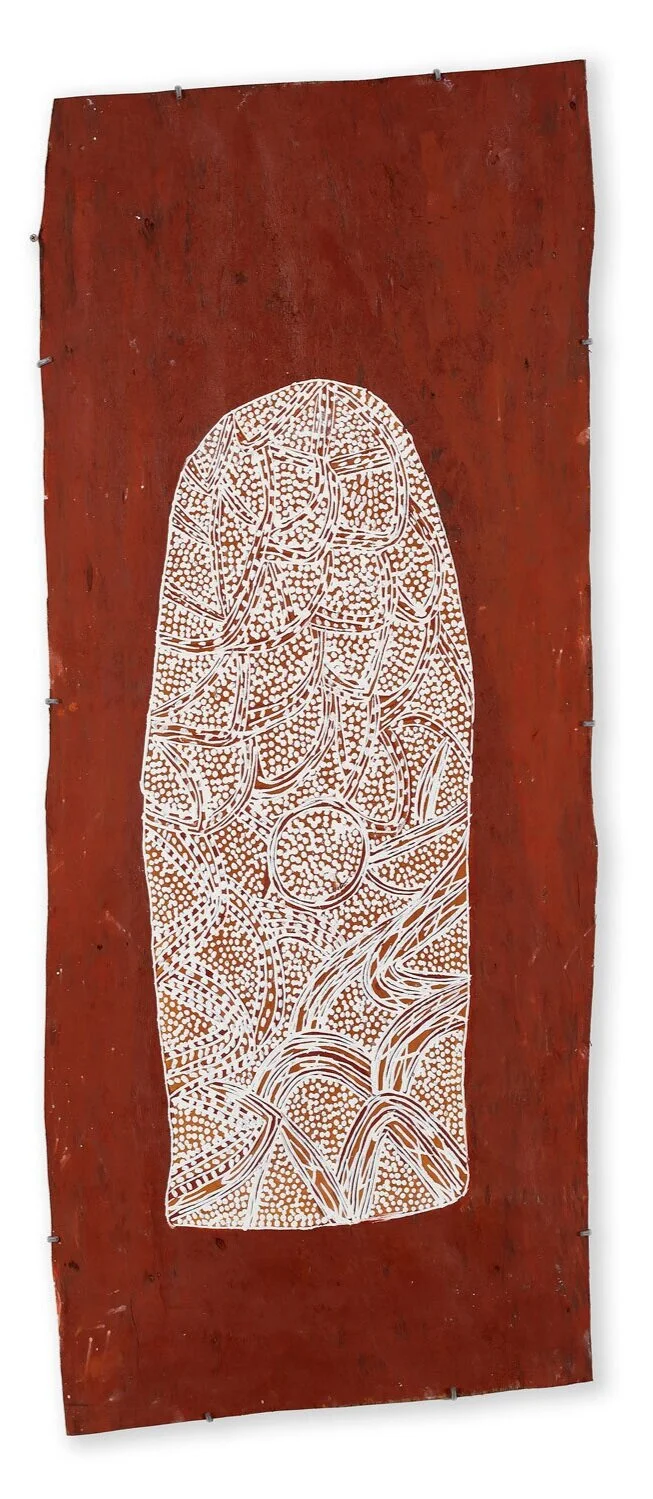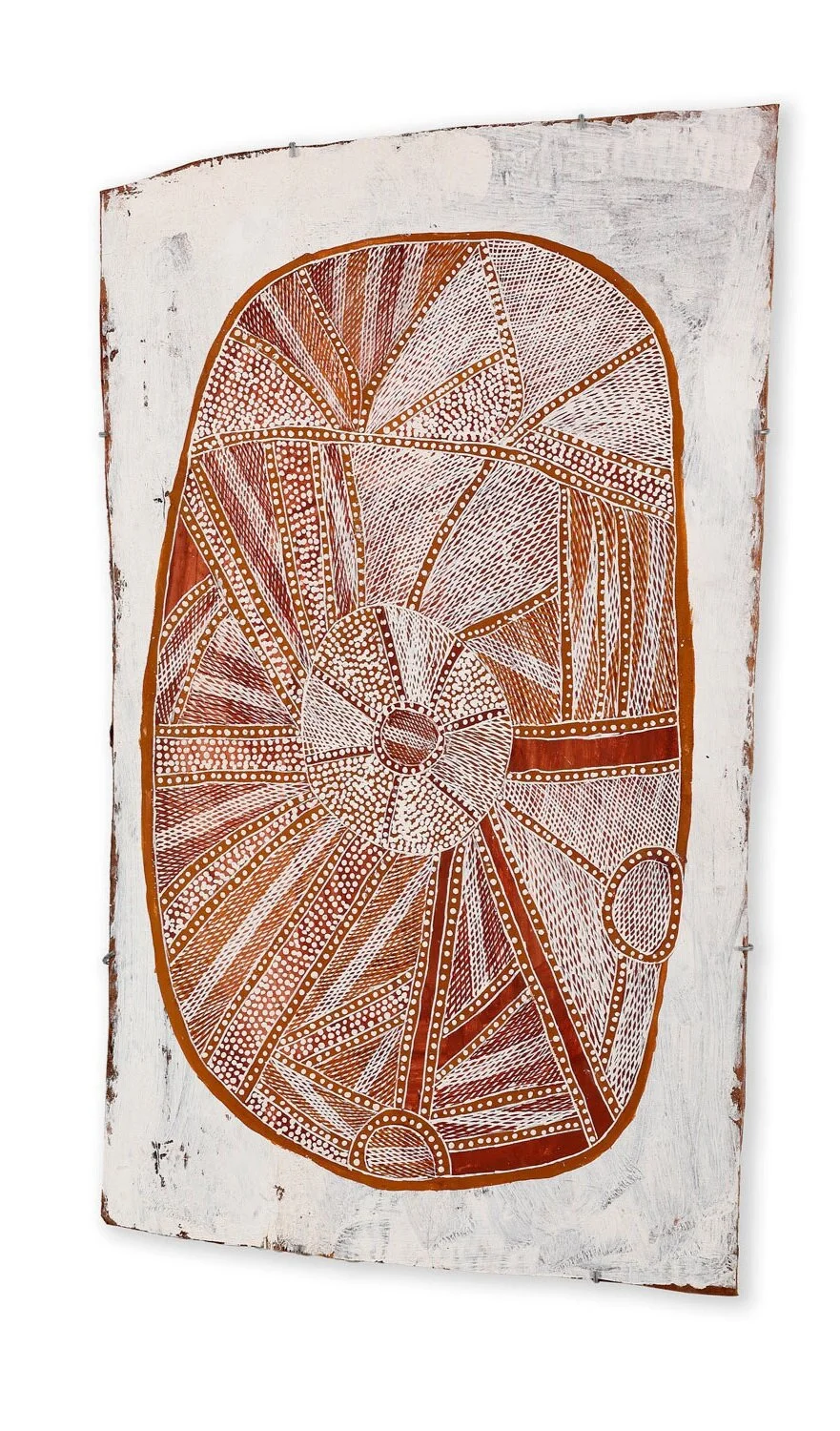Gundirr
IN ASSOCIATION WITH BUKU-LARRŊGAY MULKA CENTRE
On exhibition at
OUTSTATION GALLERY
8 Parap Place
Parap
OPENING HOURS
Mon to Fri 10 am – 4 pm
Sat 10 am – 2 pm
Mulkun Wirrpanda is an independent creative from Northeast Arnhemland who works through the community run Indigenous artist’s collective at Yirrkala known as Buku-Larrŋgay Mulka Centre. This show is the latest step along a unique pathway that she has pursued over the last ten years. A meeting with senior non-Indigenous artist John Wolseley in 2011 at an artist gathering at Yilpara on Blue Mud Bay organised by Nomad Art Projects has set in train a journey whose latest staging point is Gundirr.
For most of her career before the last decade Mulkun painted within the cannon of gamanuŋgu or sacred design relating to her own identity as a Dhudi Djapu woman of the Dhuwa moiety. She occasionally revealed the identity of her mother clan destroyed in a massacre at first contact in the early 1900s.
Wolseley and Mulkun collaborated over years to each capture the essence of important Australian food plants. They focussed on delicious nutritious food which was largely unknown to industrial society. Their combined exhibition, purchased and toured by the National Museum of Australia, also triggered the creation of the catalogue Midawarr/Harvest.
In 2018 she presented a body of work through Salon Art Projects which illustrated a myriad of shellfish which inhabit coastal waters of the Northern Territory but which are unknown to most Territorians.
Her next phase was to enquire about the intersection between these plants and these shellfish. Mangrove worms which are in fact molluscs. A category which in Western thought includes Octopus. The larvae of the Longicorn beetle which favours the fruit tree Balkpalk. Called Witchetty Grubs by English speakers these are in fact categorised as maypal or shellfish.
The next intricate detail of reality which caught her eye is the subject of these works. Top End residents know the Magnetic termite mounds. Steel-grey, thin, self supported low walls scattered through the bush that orient perpendicular to the sunrise and sunset. Often pointed at by tour guides from fast moving buses. Inside these structures something unusual is happening.
Because it is not just Munyukuluŋu , the Magnetic termites, Amitermes meridionalis, or compass termite who are living in these high rise towers. Ŋadi the meat ant, Iridomyrmex sanguineus is living side by side with them. These meat ants are coincidentally a talisman of Mulkun’s own sacred identity. A group of four clans in Northern Blue Mud Bay self identify as these meat ants. They beat a path to the ancestral rock outcrops of Wukidi a remnant of an ancient tsunami to bury their dead. As the meat ants wear a path these four clans do so too tracing a trail to this central sacred place which is still forbidden to casual visitation. It is the stinging bite of the meat ant which jolts the spirit and drives it to leave the body.
This is another hidden message from right in front of our eyes. The blind vegetarian termites and the carnivorous hunters are in fact able to live in social balance. And by accident or design Mulkun has arrived back at her sacred starting point.
– BUKU-LARRŊGAY MULKA CENTRE, 2020
IMAGE: Ŋädi ga Gundirr (detail), 2020, natural pigments on bark, 112 x 93 cm, Cat No 1199-20.
Photography by Fiona Morrison.



































